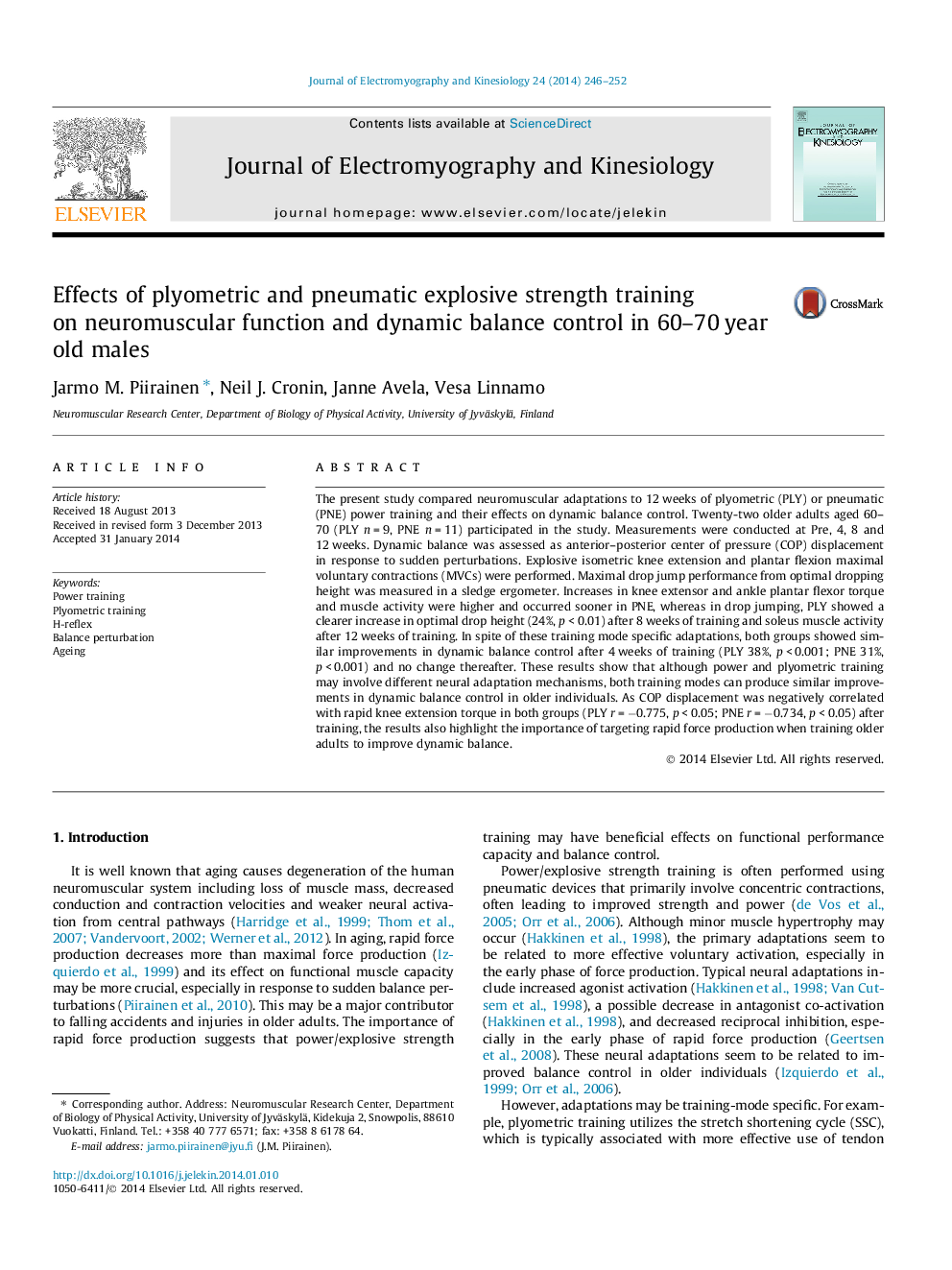| Article ID | Journal | Published Year | Pages | File Type |
|---|---|---|---|---|
| 4064661 | Journal of Electromyography and Kinesiology | 2014 | 7 Pages |
The present study compared neuromuscular adaptations to 12 weeks of plyometric (PLY) or pneumatic (PNE) power training and their effects on dynamic balance control. Twenty-two older adults aged 60–70 (PLY n = 9, PNE n = 11) participated in the study. Measurements were conducted at Pre, 4, 8 and 12 weeks. Dynamic balance was assessed as anterior–posterior center of pressure (COP) displacement in response to sudden perturbations. Explosive isometric knee extension and plantar flexion maximal voluntary contractions (MVCs) were performed. Maximal drop jump performance from optimal dropping height was measured in a sledge ergometer. Increases in knee extensor and ankle plantar flexor torque and muscle activity were higher and occurred sooner in PNE, whereas in drop jumping, PLY showed a clearer increase in optimal drop height (24%, p < 0.01) after 8 weeks of training and soleus muscle activity after 12 weeks of training. In spite of these training mode specific adaptations, both groups showed similar improvements in dynamic balance control after 4 weeks of training (PLY 38%, p < 0.001; PNE 31%, p < 0.001) and no change thereafter. These results show that although power and plyometric training may involve different neural adaptation mechanisms, both training modes can produce similar improvements in dynamic balance control in older individuals. As COP displacement was negatively correlated with rapid knee extension torque in both groups (PLY r = −0.775, p < 0.05; PNE r = −0.734, p < 0.05) after training, the results also highlight the importance of targeting rapid force production when training older adults to improve dynamic balance.
